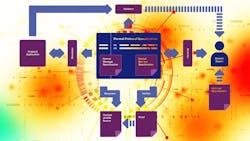Putting Protocols into Practice with RecordFlux (Download)
Translating a message specification from paper to code can be complicated and prone to error. In the best-case scenario, all aspects of the message specification are implemented in program code, housed in structures, with potentially thousands of lines of defensive coding and/or exception handling to catch potential errors. Each received message could become complex if conditions, case statements or subprograms may be required to verify message validity.
Not only is this process cumbersome for the application developer, it also makes maintaining the application difficult to nearly impossible. And testing and debugging... even worse! Tracing through thousands of lines of code and conditions is a time-consuming process. Any errors that slip through could expose the entire application to severe security issues as well (think cyber exploits).
